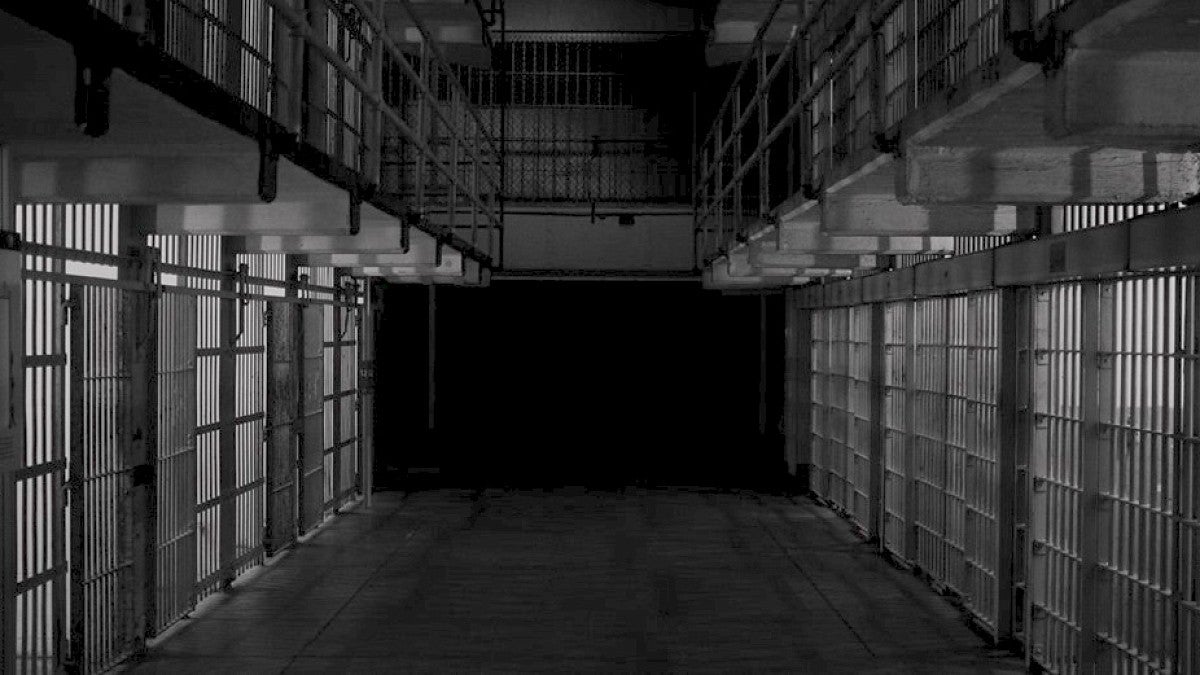A University of Oregon researcher is working with students and alumni to produce a short documentary and podcast series exploring inequities in the nation’s judicial system that drive incarceration rates in communities of color.
Ed Madison, an associate professor in the UO’s School of Journalism and Communication, is leading the project, which is being produced in partnership with Oregon Public Broadcasting. It grew out of a finding that Black youth in the United States are five times more likely to be incarcerated than white youth, according to figures compiled by The Sentencing Project, a Washington, D.C.-based incarceration advocacy agency.
“Public Plea” tells the stories of several Black juveniles caught up in Oregon’s Measure 11. Both the film and the podcast follow the men, who have been incarcerated since their mid-teens and are now in their early 20s. Once they turn 25, they will age out of youth protection and may be forced to continue the rest of their sentences in adult prison.
“The important thing to understand is that the juvenile system and the adult system are very different systems,” Madison said. “In the juvenile system, they have community college, they teach trades. But because of the timing of these three men’s sentences, they run the risk of being sent to adult prison, which is a whole different world in terms of physical and mental danger.”
Measure 11, approved by Oregon voters in 1994, created mandatory minimum sentences for certain crimes with no possibility for review or a reduced sentence. The measure mandated that juveniles age 15 and older be tried as adults when charged with certain felonies.
While recent legal reforms have eased the harsh sentencing for juveniles, they are not retroactive.
Two of the men in the documentary are requesting clemency from Oregon Gov. Kate Brown. The third is filing to have his charges reconsidered due to irregularities related to his case.
Madison said he chose to center the documentary on the young men because Measure 11 disproportionately affects people of color, specifically Black men. He held a Zoom interview with the three men to see if they would be open to the idea of “Public Plea,” which began production in September 2020.
The project looks at the issue from all perspectives and includes interviews with victims’ rights advocates and former district attorneys who oppose Measure 11 reforms. Defense attorneys, academics, youth services specialists, a criminologist, an Oregon senator and a state representative are also featured, along with Measure 11’s architect, Kevin Mannix.
The “Public Plea” team is made up of Madison and several past and present UO undergraduate and graduate students. Madison and Jordan Bentz, a 2012 graduate, are the directors. Two 2020 graduates, Cecilia Brown and Jasmine Jackson, are videographers; Bryce Dole, also a 2020 grad, is the writer; Sararosa Davies, who also graduated in 2020, is the podcast producer; fellow 2020 graduate Denise Silfee is the photographer; and 2021 grad Jassy McKinley and Class of 2023 student Kate Jacques Prentice are the researchers.
Jackson is also a production consultant, along with Sutton Raphael, a 2016 graduate.
Davies said her experience as the podcast editor for the project has been fulfilling in lots of different ways, including working with different generations of School of Journalism and Communication alumni.
“I think the stories of our subjects and experts will stick with me long after the documentary and podcast are done,” she said. “Even though I haven't been present for the interviews, I have learned so much combing through the transcripts and listening to the audio."
The documentary and podcast series are scheduled to be finished by September. Madison created a fundraiser with a goal of $10,000 to cover the cost of equipment rentals and motel stays for interviews and stipends for the students who are doing the most labor-intensive work, such as video editing. So far, the team has raised about half its goal.
“The law was originally designed to address the most heinous, really horrible crimes, and over the years, more offenses were added to the list that are questionable as to whether or not a maximum minimum should be applied,” Madison said. “The intent of this series is to create awareness about these laws and how they affect certain communities more so than others.”
—By Joanna Mann, School of Journalism and Communication


